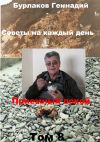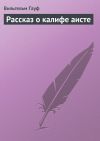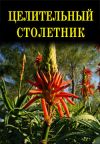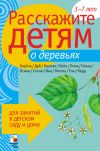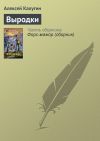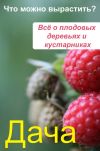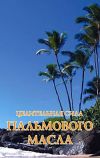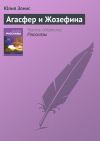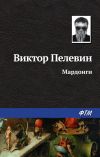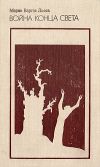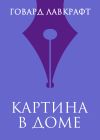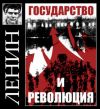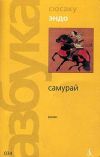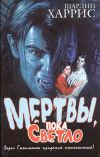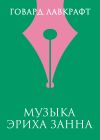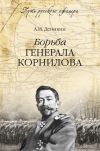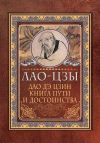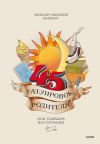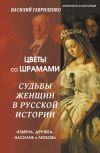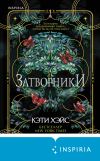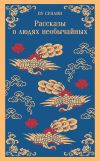Текст книги "Острова архипелага Сокотра (экспедиции 1974-2010 гг.)"
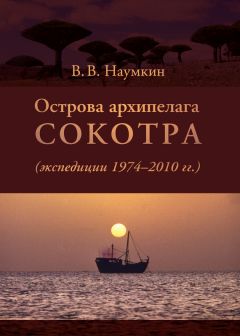
Автор книги: Виталий Наумкин
Жанр: Культурология, Наука и Образование
Возрастные ограничения: +16
сообщить о неприемлемом содержимом
Текущая страница: 36 (всего у книги 36 страниц)
108. Holy, Ladislas. Kinship, Honour and Solidarity: Cousin Marriage in the Middle East. Manchester & New York: Manchester University Press, 1989.
109. Howells, W. W. Cranial variation in man: a study by multivariate analysis of patterns of difference among recent human population // Papers of the Peabody Museum of American Archeology and Ethnology, 1973, 67.
110. Hunter, F. M. & Sealy, C. W. H. Arab Tribes in the Vicinity of Aden. Bombay, 1886, new edition 1909.
111. Ingrams, W. H. Sokotra. In: Encyclopedia Britannica: a new survey of universal knowledge, 14th edition. London, 1961.
112. Jahn, A. Die Mehri-Sprache in Südarabien. Wien, 1902.
113. Johnstone, Т. M. The Harsuri-English Lexicon. London, 1977.
114. Kennet D. Evidence for 4th/5th – century Sasanian occupation at Khatt, Ras al – Khaimah // Arabia and its Neighbours. Essays on Prehistorical and Historical Development. Abiel II. New Research on the Arabian Peninsula. Eds. C. S. Phillips, D.T. Potts, S. Searight. Brepols, 1998. C. 105–116.
115. Kennet D. Sasanian Pottery in Southern Iran and Eastern Arabia // Iran. 2002, vol. XL. C. 156–162.
116. Kennet D. Sasanian and Islamic Pottery from Ras al-Khaimah. Classification, chronology and analysis of trade in the West Indian Ocean // BAR International Series 1248, 2004.
117. King G., Tonghini Ch. The western islands of Abu Dhabi Emirate. Notes on Ghagha // Arabia and its Neighbours. Essays on Prehistorical and Historical Development. Abiel II. New Research on the Arabian Peninsula. Eds. C. S. Phillips, D.T. Potts, S. Searight. Brepols, 1998. C. 117–142.
118. King, J. S. The aboriginies of Sokotra: an ethnological, religious and philosophical review // Indian Antiquary, 1890, № 19. C. 189–215.
119. Kossmat, F. Geologie der Inseln Sokotra, Semha und Abd El Kuri. Denkschriften der Kaiserlichen Academie der Wissenschaften. Mathematisch – Naturwissenschaftliche Klasse, 71. C. 1-62.
120. Landberg, C. Glossaire datinois. Vol. 1, Leiden, 1920. Vol. 2, Leiden, 1923.
121. Langfeld J. A. Recently discovered early Christian monuments in Northern Arabia // AAE. 1994. Vol. 5, № 1. C. 32–60.
122. Leslau, Wolf. Lexique soqotri. P., 1938.
123. Lister, В. W., Orr, N. W., Botting, D., Ikin, E. W., Mourant, A. E., Lehmann, H. The Blood Groups and Haemoglobin of the Bedouin of Socotra. Man (The Journal of the Royal Anthropological Society). 1966. Vol. 1, № 1. C. 82–86.
124. Lonnet, A. The Socotri language: past, present and future. In: Socotra, 1996.
125. Lüttig, H.C. The Religions System and Social Organisation of the Herero. Utrecht, 1933.
126. McCrindle. The Christian Topography of Cosmas, an Egyptian monk. London, 1897.
127. McIntosh, J. R. The Megalith Builders of South India; a Historical Survey. South Asian Archaeology, 1979.
128. Miller, Anthony G. & Morris, Miranda M., Ethnoflora of the Soqotra Archipelago. Ed. by Ruth Atkinson. Edinbourgh: Royal Botanic Garden, 2004.
129. Monod T. Sur un site a bracelets de verre des environs dAden // Raydän. 1978. Vol. 1. C. 111–124.
130. Morant, G.M. A description of human remains excavated by Miss G. C. Thompson at Horeidha in: Thompson, G. C. The Tombs and Moon Temple of Horeidha (Hadramaut). Oxford: Reports of the Research Commission, Society of Antiquaries, 1944, № 13.
131. Morris, Miranda M. Conservation and Sustainable Use of the Biodiversity of the Soqotra Archipilago. Manual of Traditional Land Use Practices. Edinburgh: Royal Botanic Garden, February 29, 2002.
132. Müller, D. H. (editor). Die Mehri und Soqotri-Sprache. I, 1902; II, 1905; III,
1907. Sudarabiche Expedition der Kauserlichen Academie der Wissenschaften in Wien.
133. Nakano, A. Comparative Vocabulary of Southern Arabic. Tokyo, 1986.
134. Naumkin, Vitaly. Island of the Phoenix. An Ethnographical Study of the People of Socotra. Reading: Ithaca Press, 1993.
135. Naumkin V.V., Sedov A. V. Monuments of Socotra / Topoi. Orient – Occident. 1993. Vol. 3/2. C. 569–623.
136. Naumkin V. V., Sedov A. V. Monuments of Socotra. Athens, Aden, Arikamedu. Essays on the interrelations between India, Arabia and the Eastern Mediterranean. Ed. M.-F. Boussac, J.-F. Salles. New Delhi, 1995. C. 193–242.
137. Nöldeke, Th. Neue Beitrage zur semitischen Sprachwissenschaft. Strasbourg, 1910.
138. Oilier, Cliff, Pain, Collin. The origin of Mountains. Cambridge: Routledge, 2000.
139. C. Plinius Secundus. Historia Naturalis, book X. Ed. Mayhoff. Berlin, 1909.
140. Potts D. T. The Arabian Gulf in Antiquity. Vol. II. From Alexader the Great to the Coming of Islam. Oxford: Oxford University Press, 1990.
141. Potts D.T. Nestorian Crosses from Jabal Berri/AAE, 1994. Vol. 5, № 1. C. 61–65.
142. Purchas, Samuel. Hakluytus Posthumus or Purchas His Pilgrims. Vol. 1–4. London, 1625.
143. Radcliffe-Smith, A. The botany of Socotra. In: Doe, 1992.
144. Recueil des Voyages… de la Compagnie des Indes Orientales. Amsterdam, 1754.
145. Rhodokanakis, V. Der vulgärarabische Dialekt im Dofar (Zfar). Vol. 1. Wien, 1908. Vol. 2. Wien, 1911.
146. Rhodokanakis, V. Der Zweigipflige Akzent im Minäo-Sabäjsehen / Studien zur Lexicographie und Grammatik des Altsüdarabischen. H. 1. Wien, 1915 (SBAW
Wien. Bd 178, Abh. 4).
147. Risdon, D. L. A study of the cranial and other human remains from Palestine excavated at Tell Duweir (Lachish) by the Wellcome-Marston Archeological research expedition. Biometrica, 31, 1–2.
148. Robin, Christian & Gorea, Maria. Une inscription palmyrenienne deposee dans une grotte de Suqutra. Report, 5 avril 2002.
149. Le Routier de Dom Joao de Castro: L’exploration de la Mer Rouge par les Portugais en 1541. Trad, du portugais… par A. Kammerer. P., 1936.
150. Ryckmans, J. A Three Generations Matrilineal Geneology in a Hasaean Inscription: Matrilineal Ancestry in Pre-Islamic Arabia. Mimeo, Bahrain, 1983.
151. Schoff, W. H., ed. The Periplus of the Erythraean Sea. New York, 1912.
152. Schweinfurth, G. Ein Besuch auf Socotra. Freiburg, 1884.
153. Schweinfurth, G. Erinnerungen von eines Fahrt nach Socotra. Westermann’s Monatshefte, nos. 34 and 35.
154. Schweinfurth, G. Das Folk von Socotra. Unzere Zeit, 1893.
155. Sedov A. V. Les fouilles du secteur 3. La synagogue./Qäni’. Le port du Hadramawt entre la Mediterranee, FAfrique et Finde. Fouilles Russes 1972, 1985—89, 1993-94/sous la direction de J.-F. Salles et A. Sedov / Brepols, 2010. C. 87-122.
156. Sedov A. V. Les fouilles du secteur 6/Qänf. Le port du Hadramawt entre la Mediterranee, lAfrique et Finde. Fouilles Russes 1972, 1985-89, 1993-94 / sous la direction de J.-F. Salles et A. Sedov/Brepols, 2010.
157. Serjeant, Ralph B. The Portuguese of the South Arabian Coast. Oxford, 1963.
158. Serjeant, Ralph B. The coastal population of Socotra // Doe D. Brian, 1992.
159. Shakti Gupta M. Plant Myths and Traditions in India. Leiden, 1971.
160. Sharma, A. Comparative Methodology in Dermatoglyphics. Delhi, 1964.
161. Shinnie, P. L. Socotra. Antiquity, London, 1960. Vol. 24.
162. Simeone-Senelle M.-С., Lonnet A. Lexique des noms des parties du coprs dans les langues sudarabiques modernes. Premiere partie: la tete. MAS-GELLAS,
1985–1986, 3: 259–304.
163. Simeone-Senelle M.-С., Lonnet A. Les noms des parties du corps dans les langues sudarabiques modernes. Deuxieme partie: les membres. MAS-GELLAS
N. S., 1988–1989, 2: 191–255.
164. Simeone-Senelle M.-С., Lonnet A. Lexique Soqotri: les noms des parties du corps. Semitic Studies in Honor of Wolf Leslau. Wiesbaden, 1991. C. 1445-87.
165. Simeone-Senelle M.-С., Lonnet A. Complements ä “Lexique Soqotri: les noms des parties du corps”. MAS-GELLAS N. S., 1992, 4: 85-108.
166. Simeone-Senelle M.-С., Lonnet A. Notes sur le premier vocabulaire soqotri: le Memoire de Wellsted (1835). Deuxieme partie. MAS-GELLAS N. S., 1992, 4: 13–82.
167. Snell, I. E. Witch Trials in Socotra. American Documentation Institute, c/o Photoduplication Service. Library of Congress, № 5623 (in Miscellanea Asiatica Orientalis series).
168. Socal, R. R. & Rohlf, EJ. The comparison of dendrograms by objective methods. Taxonomy, 1962. Vol. 11.
169. Socotra. Proceedings of the First International Symposium on Socotra Island: Present and Future. Aden, March 1996. Vol. 1–2. Ed. By H. J. Dumont. New York United Nations Publications, 1996.
170. Sprenger, A. Die Alte Geographic Arabiens. Bern, 1875.
171. Stripling G. W. E. The Ottoman Turks and the Arabs. Urbana, Illinois, 1942.
172. Thomas, Bertram. Arabia Felix: Across the Empty Quarter of Arabia. New York, 1932.
173. Vogt, B. 1st Millennium BC graves and burial customs in the Samad Area (Oman). Arabie orientale, Mesopotamie et Iran meridional, de Гage du fer au debut de la period islamique (AOMIM). Paris, 1984.
174. Van Belle, R. A. & Wranik, W. Chitons (Mollusca: Polyplacophora) from the coast of Yemen and Socotra Island. Fauna of Saudi Arabia, 1991. № 12. C. 336–381.
175. Weeks L., Morris M., Mccall B, Al-Zubairy K. A Recent Archaeological Survey on Soqotra, January 5th – February 2nd 2001 / AAE, 2002. Vol. 13, № 1. C. 95-125.
176. Wells ted, J. В. Memoir on the Island of Socotra. Journal of the Royal Geographical Society, 1835. Vol. 5.
177. Wellsted J. B. Report on the Island of Socotra / JASB, 1835. Vol. 4.
178. Weygoldt, P. & Van Damme K. A new troglomorphic whip spider of the genus Charinus (Amblypygi: Charinidae) from Socotra Island. Fauna of Arabia,
2004. № 20. C. 327–334.
179. Whitcomb D. S. Islamic Archaeology in Aden and Hadramaut / Araby the Blest. Ed. D. T. Potts. Copenhagen, 1988. C. 177–263.
180. Whitehouse D. The al-Khamis mosque on Bahrein: A note on the first and second phases/ААЕ, 2003. Vol. 14. № 1. C. 95-102.
181. Whitehouse D., Williamson A. Sasanian Maritime Trade. / Iran, 1973. Vol. XI. C. 29–49.
На арабском языке
182. Ибн Баттута. Рихлат Ибн Баттута. Бейрут, 1968.
183. Аль-Махри. Сулейман Ахмад Сулейман аль-Махри. Лямахат ’ан Сокотра. Ас-Сакафа аль-Джадида. 1974. № 5. С. 42–67.
184. Ар-Руми. Шихаб ад-Дин И акут ибн Абдаллах ал-Хамави ар-Руми. Китаб му‘джам ал-булдан. Т. 1–10. Каир, 1906.
185. Ас-Салими. Нур ад-Дин Абдаллах бин Хамид ас-Салими. Тухфат аль-а’йан би-сират ахль ’Уман. Маскат, 2000.
186. амдани. Ал-Хасан ибн Ахмад ибн Иакуб аль-Хамдани. Китаб ал-Иклил. Т. 1. Багдад, 1963.
187. Аль-Хамдани. Ал-Хасан ибн Ахмад ибн Иакуб аль-Хамдани. Сифат джазират ал-араб. Сана, 1983.
188. Аш-Шазаби. Фахд Салим Кафайин аш-Шазаби. Мухтарат мин аль-адаб ас-сокотри. Хадибо, 2006.
Summary
In his book “Islands of the Archipelago of Soqotra: Expeditions of 1974–2010” Professor Vitaly Naumkin, famous Russian scholar and Director of the Institute of Oriental Studies under the Russian Academy of Sciences brings together almost four decades of research into the lives of the inhabitants of one of the most mysterious and remote places in the Middle East. The book is a unique investigation of the nature, history, origins, physical features, traditional economic activity, social and tribal structure, customs, beliefs and folklore of this small ethnic group within the population of present-day Yemen.
Chapter 1 is a general description of the geography, climate, water and soil, as well as the flora and fauna of the islands. The chapter gives an interpretation of the division of the archipelago and its surrounding area of water into a series of islands, straits and banks. It also examines the flora and fauna of the islands, mainly of Soqotra.
Chapter 2 is dedicated to the history of the islands based on the original Arabic and European sources, medieval chronicles, accounts of journeys by Arab and Western travelers etc. It introduces all the stages of the island’s history from the time when immigrants from the Arabian peninsular settled here. The author shows that it was of the early centers of Christianity, while Islam spread quite late, with new waves of migration from Mahra in the south-east of Yemen. British and Portuguese colonizations had not left any noticeable trace in the island’s history.
Chapter 3 illuminates with the physical characteristics of the Socotrans the study of the dermatoglyphics, odontology and craneology of the population of the islands. The Socotrans are a group of mixed origin, in which South Europeoid West Asian component is predominant, while the second place is occupied by the Indian Australoid component, and the African one comes third.
Chapter 4 deals with the archeology of Socotra. Stone tools from the Oldowan period (2,5–1,7 mln years ago) found by a team of Russian archeologists showed that the island of Socotra had been probably inhabited during that period. The team excavated several pre-Islamic settlements and cemeteries in different parts of Soqotra including the ancient capital – Hajrya where the remains of a Nestorian church were found. The chapter also gives a description of pottery discoveries from burials, as well as some bronze and iron objects and glass vessels. Russian archeologists have concluded that Soqotra might have played a much more influential role in Mediterranean trade than previously assumed.
Chapter 5 considers various aspects of the social organization of So-qotrans, as well as the types and forms of economy. The chapter provides a general overview of the population groups living in different geographic zones. The author concentrates on the core tribes of the pastoralists, although the economic activity of the coastal fishermen, as well as those with a mixed economy is also analyzed. The Da ‘rho tribe from the Central region, where the author has conducted extensive fieldwork features as a detailed case study.
Chapter 6 analyzes the material culture of modern Soqotrans. The focus here is on animal husbandry as the main activity of Soqotran Bedouins which has retained many archaic traits. Multiple uses to which domestic animals can be put (for milk, meat, bones, wool, skins etc.), as well as palm-growing and fishing are considered. A variety of techniques used for the production of objects, such as water-skins, the famous Soqotran ghee, woolen blankets made on traditional machines, pottery produced without potter’s wheel, as well as traditional Soqotran houses of different types, are examined. The chapter contains valuable vocabulary collected by the author and related to the economy.
Chapter 7 deals with marriage and the Soqotran kinship system, including choice of marriage partner, remnants of dual organization, locality of marriage, divorce, remarriage and polygamous marriage, system of property inheritance etc. The chapter contains a detailed analysis of the kinship system based on interviews and surveys of the island Bedouins. Particularly noteworthy is the lexicographic material which has not as yet been considered in academic literature.
Chapter 8 examines Soqotran family, in particular, such types as the nuclear family, complex family, divided family etc. The author utilizes extensive interviews conducted with a variety of informants from different Soqotran tribes.
In Chapter 9 the author concentrates on the spiritual culture of Soqotra. Sections on magic and sorcery, remnants of pre-Islamic beliefs, different customs and rituals, popular festivals, folk medicine etc. are of particular interest. The detailed examination of folklore texts, myths, tales, poetry and songs collected by the author is also extremely valuable. Based on this research the author offers his own system of classification of the Soqotran folklore.
Chapter 10 presents a brief but complex overview of the social structure, settlement and economy of the tribes of the island of Abd al-Kuri. The chapter provides examples of their folklore and analyzes family relations.
Conclusion contains general reflections and research implications based on many years of fieldwork on the island. Here the author deals with such general issues, as the origins of the Soqotrans, the time of their settlement of the island, eras of its history, specificity of its economy and tribal system and many other research issues considered in greater detail in the chapters.
The book contains illustrations and a bibliography.
Illustrations

Илл. 1. Вид Сокотры из космоса

Илл. 2. Предгорья северного побережья

Илл. 3. Северные отроги Хагьхера

Илл. 4. Автор с шейхом племени даръхо Исой, сыном Амера Ахмеда под деревом дам аль-ахавейн

Илл. 5. «Бутылочное дерево» Adenium obesum

Илл. 6. «Огуречное дерево»

Илл. 7. Ладаноносное дерево Boswellia

Илл. 8. Алоэ

Илл. 9. Гроза местных жителей паук

Илл. 10. Паук «черная вдова» «фитамэ»


Илл. 11, 12. Сокотрийские птицы

Илл. 13. Повсеместно обитающие около жилищ стервятники Neophron perспор terus

Илл. 14. Сокотра славится разнообразием рыбы

Илл. 15. Сокотра на старой карте


Илл. 16, 17. Форт в Суке









Илл. 18–26. Типы сокотрийцев

Илл. 27. Современная глиняная курильница для благовоний

Илл. 28. Автор и Иса, сын Амера Ахмеда (съемка 2006 г.)



Илл. 29–31. Вади Дарьхо – одно из красивейших мест на острове

Илл. 32. Бедуины угощают автора пахтой («хэлоб»)

Илл. 33. Сокотрийские коровы на водопое

Илл. 34. Местный одногорбый верблюд

Илл. 35. Поэт Али Абдалла Ригдхи показывает, как добывают огонь

Илл. 36. Растирание глины для изготовления посуды

Илл. 37. Современный глиняный чайник, по-старинному сделанный без гончарного круга

Илл. 38. Стрижка ребенка, начало 1980-х годов

Илл. 39. Бедуинское угощение (2010 г.)

Илл. 40. Тип каменной зернотерки

Илл. 41. Автор учится работать

Илл. 42. Автор с бедуином из племени дарьхо (фото 2009 г.)

Илл. 43. Так здороваются сокотрийцы

Илл. 44. Одно из селений Абд-эль-Кури в 1960-е годы
Правообладателям!
Это произведение, предположительно, находится в статусе 'public domain'. Если это не так и размещение материала нарушает чьи-либо права, то сообщите нам об этом.
